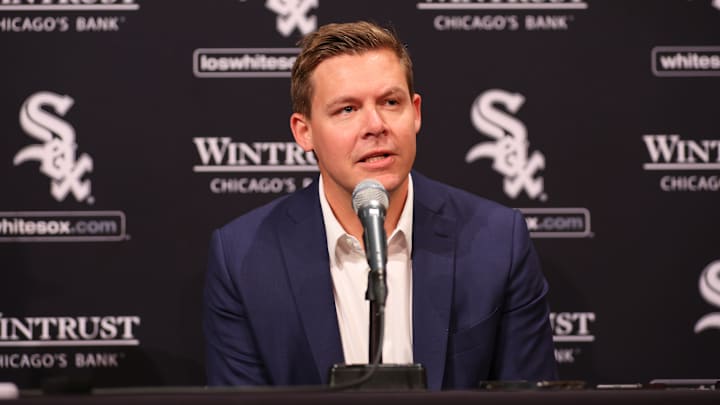More than contact or power, Chris Getz and the Chicago White Sox front office have been emphasizing that making the right swing decisions at the plate is the number one priority for their young hitters. By being disciplined and making well-reasoned choices in a split second, the belief is that any player can maximize his physical traits and excel in both the contact and power departments to the best of his abilities.
That's just sound baseball logic. But what does it mean to make good swing decisions? It's not simply taking pitches, but rather spitting on the tough ones, even within the strike zone early in the count, while also pouncing on the mistakes, no matter when they come.
As a result, there's not really one simple metric to look at to determine if a hitter or group of hitters is pulling the trigger at the right time.
Well, unless you ask our friends over at Baseball America. And, according to them, the White Sox farm system is one of the best in baseball at making the right decisions at the plate.
The White Sox farm system ranks near the top of Baseball America's swing decision metric
Per Baseball America, their swing decision metric is based on swing percentage minus chase percentage, and then weighted and scaled to 100. That means 100 is good, while anything above is excellent, and anything under is below average.
Chicago's farm system took home the second-place spot this season, coming in at 102.2, just a hair behind the rival Detroit Tigers, who came in at 102.3.
That's great news for the future. While the offensive performance in 2025 was better than 2024's disaster, it still left a lot to be desired. Looking at the big league club, the pitching staff has progressed a good deal quicker than the hitters.
That could all change soon, though, as some of Chicago's top offensive prospects begin making their way to the majors.
While he's a long way away, Caleb Bonemer exemplified perfection in his execution of this strategy, posting a combined .874 between Single-A Kannapolis and High-A Winston Salem on his way to winning Carolina League MVP.
Bonemer's stellar performance was largely due to his selectivity at the plate. Across both levels, the 2024 second-round pick posted a 78.3% contact rate, while swinging just 38.8% of the time, and getting called for swinging strikes just 8.4% of the time. This wasn't some powerless slap hitting either, as he drove the ball with regularity, posting a .192 isolated slugging percentage.
Not every youngster is on board yet, though. There was a lot to like about Braden Montgomery's professional debut, as one of the jewels of the Garrett Crochet trade rose from Kannapolis all the way up to Double-A Birmingham.
Still, with each promotion, his strikeout rate rose, his walk rate declined, and his power dissipated. That's not to say he won't right the ship. The organizational philosophy is strong, and his talent is undeniable.
Overall, the performance of Bonemer, Montgomery, and the other top bats in the system will be a key to watch in 2026, and how they put together an at-bat, moving from patience to aggression when warranted, will be a key to success. If they can master that, the future in Chicago will be very bright.
